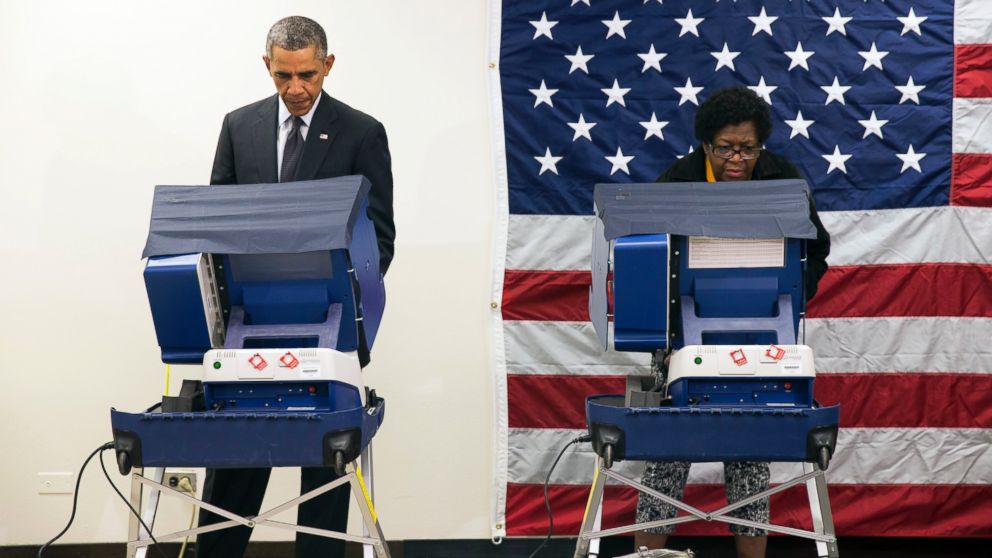What President Obama And 2 Million Early Voters Can Tell Us About Election Day
President Obama is one of 2 million early voters so far.

— -- President Barack Obama joined almost 2 million voters who have voted before Election Day as he cast his ballot early this morning at the Martin Luther King Jr. Community Center in Chicago.
“I’m so glad I can early vote. It’s so exciting. I love voting,” Obama said, making a not-so-subtle pitch to voters around the country.
Both parties are hoping voters in the 35 states who have early voting heed Obama’s words and either mail in a ballot or go to a polling station before November 4. Nineteen million voters did so in 2010, the last strictly midterm election, and University of Florida associate professor and elections guru Michael McDonald expects 2014’s early vote total to surpass that. He spoke with ABC News about some of the trends he’s seen so far, and what they could mean for Election Day.
1. Bigger turnout within both parties Republicans have been stepping up their early vote mobilization game, meaning they’ve been catching up to Democrats who have been leading that charge the past few cycles, McDonald said. That’s helped Republicans close wide deficits they had at this time in 2010 in Iowa and North Carolina, and they have a 14-point lead in Florida. But it’s not clear whether these are only temporary gains for Republicans; McDonald said he suspects that Republicans are only reaching registered Republicans, which means they might have propelled more GOPers to the polls early, but those voters may be ones that would have gone to the polls on Election Day anyway, meaning fewer total new Republican votes.
2. More first-time voters There is a big chunk of voters who have cast early ballots but who did not vote in 2010, McDonald noted, which right now is a trend that seems to favor Democrats. In North Carolina and Georgia, Republicans are pulling strong early vote numbers among those who also voted in 2010 but Democrats are doing better with voters who don’t have a history of voting in 2010 (Georgia doesn’t track party affiliation, but in that state’s case, race provides a useful proxy). That’s a point in favor of Democrats reaching out to new voters, not just likely ones – and if that’s true, those numbers could get even higher once early voting starts in a number of states – a method that traditionally favors Democrats.
3. Unaffiliated push McDonald points to Iowa as a potentially illustrative example of how many unaffiliated voters are casting early ballots, and with which party they might be more closely affiliated. “The Democrats and the people who have no party registration tend to be tracking together,” McDonald noted. “The Republicans, the other hand, are completely uncorrelated from the people with no party registration.”
Regardless of the early voting tea leaf-reading, McDonald said the bottom line is that both parties believe their marquee races around the country are going to be close – and no one is taking any race for granted. Even McDonald issued a caveat when he said election turnout would continue in an upward trajectory in future cycles: “Trends can always be broken. You never know.”
Get real-time results pushed to your phone on Election Night. Click here to sign up for the races that matter most to you.




